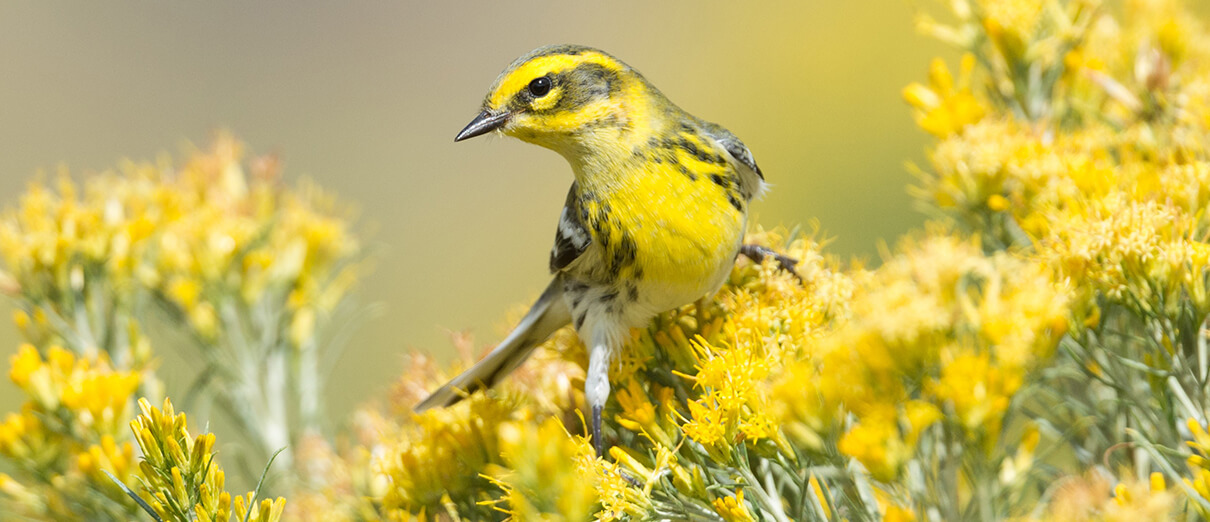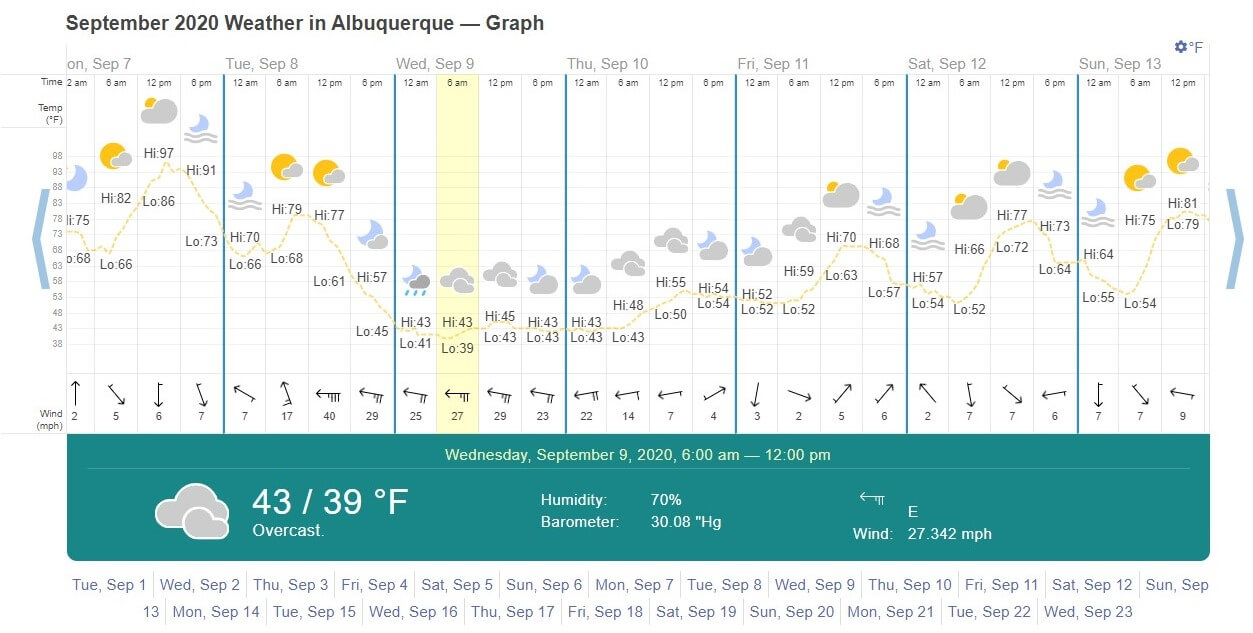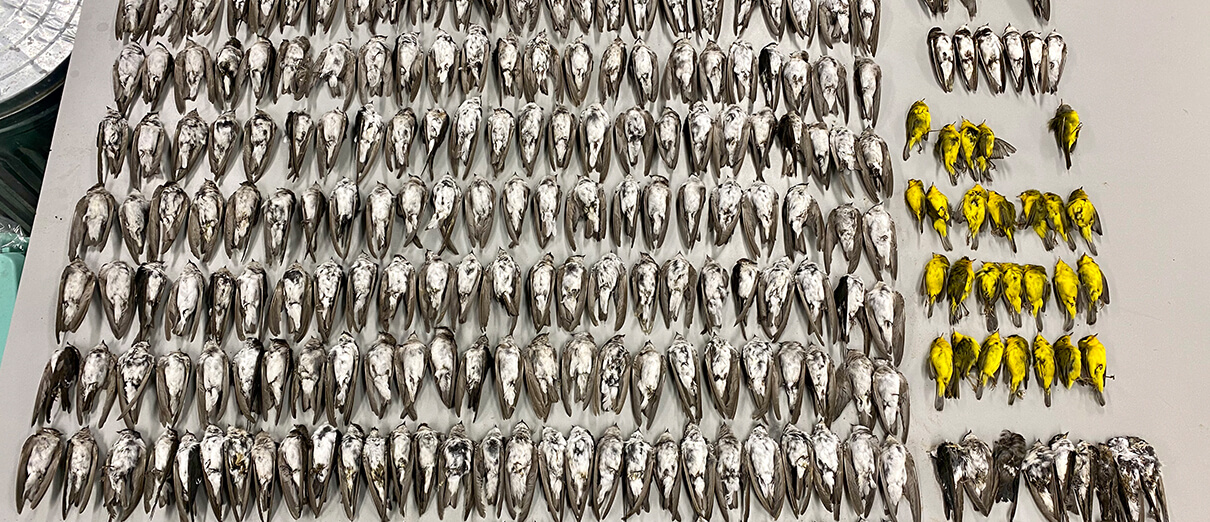Thousands of Migratory Birds Suddenly Died in New Mexico. What Does This Mean for Conservation?
Last month, thousands of birds died across New Mexico. At the White Sands Missile Range, where researchers normally encounter one or two dead birds each week during fall migration, there were suddenly hundreds. In northern New Mexico, people reported large numbers of “small, yellow birds,” mostly migratory Wilson's and MacGillivray's Warblers, dead on the ground. Along the Rio Grande, a journalist discovered more than 300 dead birds, most of them Violet-green Swallows, next to the river. Similar events were observed in neighboring Colorado, Arizona, and Texas, and records of dead and dying birds piled up on an iNaturalist page dedicated to “Southwestern Avian Mortality.” Across the region, the total number of dead birds was estimated in the hundreds of thousands.
By now, you have probably heard of this story. The sudden, tragic death of thousands of birds attracted widespread news coverage across the country and around the world.

Townsend's Warbler by John C. Mittermeier
I happened to be traveling away from my home in New Mexico when the news of the bird deaths broke in early September and, after reading the stories, I returned home anxious about what I might find. Would the local park be littered with dead warblers? Would the usual migrants be missing? By the time I arrived in New Mexico in mid-September, however, things felt strangely normal. A couple of Wilson's Warblers flitted around the bushes in the yard, a Townsend's Warbler stopped in to take a drink from the bird bath. If I had not read the news, I probably never would have guessed that anything had happened.
At American Bird Conservancy (ABC), we spend a lot of time thinking about how to protect healthy populations of wild birds. As conservationists, it is important for us to understand both why an event like the bird deaths in New Mexico occurred and, perhaps more importantly, what it means for the conservation of birds in the United States and throughout the Americas.
So, why did thousands of birds suddenly die early last month, and how should we as conservationists be thinking about and responding to this event?
Why did this happen?
From what we know now, it seems likely that the majority of birds died as the result of a sudden cold snap that began on September 9. Over two days, temperatures in Albuquerque plunged from a high of 97℉ to lows of 39℉. The lows marked the coldest recorded temperatures for early September in more than a century and were accompanied by high, sometimes hurricane-force winds. Some parts of the state had their earliest recorded snowfall ever.

Weather chart from www.timeanddate.com
Weather events like this have a history of killing migratory birds. In particularly dramatic examples, millions of migrating swallows died following a September snowstorm in Germany in 1931, thousands of Scarlet Tanagers and other migrants perished as a result of unseasonable spring weather in the northeastern United States in May 1974, and an estimated 1.5 million Lapland Longspurs died in a snowstorm in Minnesota in 1904. University of New Mexico researcher Jenna McCullough collected swallows and other migrants following the recent cold snap and analyzed the specimens to understand their cause of death. As McCullough concludes, the timing of the bird deaths, together with the species impacted (primarily insectivorous migrants like warblers, swallows, and flycatchers), and the physical condition of the birds she examined, all support the conclusion that most of the deaths in early September resulted from this weather event.
While the cold snap may have led to the majority of these recent bird deaths, it also seems probable that it was not the only factor. As early as August 20, when temperatures in southern New Mexico were a blazing 100℉, unusually high numbers of dead birds were already being found at White Sands.
The drivers behind these earlier events are less clear. They could be related to local factors, or to the severe drought in the southwestern United States and with the extensive fires across Oregon and California. Fires alter the migratory movements of birds and smoke inhalation can lead to respiratory problems. For those of us watching images of the California fires or seeing maps of the smoke spreading across the United States, it is easy to imagine these events impacting migratory birds. Forensic analyses of bird specimens are in progress. The findings should provide insight into whether or not smoke inhalation played a role.

Specimens of more than 300 birds, including more than 250 Violet-green Swallows and 35 Wilson's Warblers, collected by Jenna McCullough and Nick Vinciguerra along the Rio Grande in Velarde, NM. Photo by Jenna McCullough/University of Mexico.
What does it mean for conservation?
When I personally heard about the birds dying, my first thought was: 2020 strikes again. In a year where each new month seems to outdo its predecessors with unsettling news, the apocalyptic image of migratory birds falling dead from the sky somehow seemed fitting. Even if a significant component of this event was simply bad luck, however, I think there are at least two important considerations for conservationists to take away from this tragedy.
First, scientists have been careful to point out that we do not know if the bird deaths were directly linked to climate change. Given the complexity of understanding events like this one, it is possible we may never know for certain if factors such as the wildfires resulted in more birds dying. Regardless of these direct links, however, we need to consider these events within the broader context of climate change.
Populations of migratory birds have survived cold snaps, wildfires, and droughts for millennia. The scale and coordinated timing of these events, however, is new. Migratory birds traveling across the western US and into New Mexico earlier last month faced record-breaking wildfires at the same time as the most severe drought in 1,200 years, at the same time as the most severe cold snap in over a century. Both the drought and the wildfires are the direct consequences of human-generated climate change. Alone, each of these factors presents a challenge for migrating birds. Together, it is easy to see how their impact could be particularly deadly.
For me, this complexity encapsulates the challenge in how we think about the impacts of climate change in conservation. Rarely does climate change produce a novel threat or a smoking gun of causation. Instead, climate-driven events often set the stage for other risks. In western North America, warming temperatures do not directly kill conifer trees, but they do lead to increased populations of bark beetles that feed on the trees' inner bark, preventing the flow of nutrients and ultimately leading to thousands of acres of trees dying. In Hawai'i, increasing temperatures in the mountain forests do not kill endemic birds, but they let malaria-carrying mosquitoes move into higher elevations, leading to the decline and extinction of bird species.
In other situations, these chains of causation may be even more complex and harder to detect. The events in New Mexico last month could be one such situation. Did fires and drought — exacerbated by climate change — play a role in causing additional bird deaths from this particular cold snap? Maybe. Even when the forensic evidence comes back, it may be hard to answer this question conclusively.
The influence of climate change can also be more subtle and less direct. Even if it turns out that drought and fire did not directly lead to the deaths of birds this fall, and this really was just another unlucky event in what feels like an unlucky year, the destruction created by fires and droughts will lead to more challenging migrations and less breeding habitat for many species, and thus potentially slow population recoveries.
Second, reading the news reports and scrolling through the growing numbers of dead bird images posted to iNaturalist, I have been thinking about these events in the context not only of climate change, but also of the large-scale declines in the populations of birds and other animals around the world. As conservationists, we often rightly focus on the risk of species going extinct, but an equally important challenge — though often harder to quantify — is the declining number of individuals in populations of wild animals. You may have heard about the estimated 3 billion birds lost in North America since 1970. This is part of an overall pattern of planetary ‘defaunation.' The World Wildlife Fund Living Planet Index estimates that, on average, populations of mammals, birds, fish, reptiles, and amphibians have declined by 60 percent in the past 40 years. I find that shocking. Even though species may not go extinct in the immediate future, the current trends clearly show that there will be fewer and fewer individuals of those species.

Wilson's Warbler by John C. Mittermeier
This story of defaunation has relevance to what happened in New Mexico. The birds that seemed to be most heavily impacted, species such as Wilson's Warblers and Violet-green Swallows, are not currently threatened with extinction. However, die-offs of birds due to sudden weather events can lead to 25- to 90-percent declines in the number of breeding individuals the following year, and local populations can take up to seven years to recover from these events. If those populations are already declining due to habitat destruction, agricultural intensification, and increased pesticide use (as we know they are) and are already stressed by climate change-related events such as droughts and fires, we can only imagine that those recoveries will be slower, if they happen at all.
While these questions are pressing, they are not new. Over ten years ago, I researched the extinction of the Heath Hen, Tympanuchus c. cupido. Heath Hens, a subspecies of the Greater Prairie-Chicken, were once common in eastern North America. Throughout the 18th and 19th centuries, Heath Hen populations decreased dramatically due to a combination of overhunting and habitat destruction. By 1900, fewer than 100 Heath Hens remained, all on the island of Martha's Vineyard. In the early 20th century, however, American attitudes toward nature were starting to change.
There were signs of hope for the Heath Hen. A reserve was created, the birds were protected from poaching, and the population on Martha's Vineyard climbed to nearly 2,000 birds. Then in 1916, a wildfire destroyed much of the Heath Hen's habitat. Soon afterward, an unusually severe winter hit eastern Massachusetts. The Heath Hen population crashed, as it undoubtedly had in response to fires and winter storms in the past. But this time, the already reduced numbers of birds made things different. When the population of a species is already reduced, the impacts of events like fire or sudden weather events are exacerbated. In the case of the Heath Hen, this combination proved overwhelming. The population never recovered, and in 1932, the last Heath Hen, nicknamed "Booming Ben," died. The subspecies was extinct.
Despite the events this September in New Mexico, populations of most of the species affected remain large. But we have clear evidence that birds across North America are declining and that the risks that they face, many of them related to climate change, are increasing. The story of the Heath Hen provides us with a warning: If we want our birds to survive, we need to do everything we can to help protect their populations before it becomes too late.
What can we do?
ABC is currently leading efforts to stop the declines in bird populations and to ensure that our birds are more resilient to climate change and weather events. To find out more about ways that you can help, visit our 3 Billion Birds page.
 | John C. Mittermeier is ABC's Director of Threatened Species Outreach. |


















































